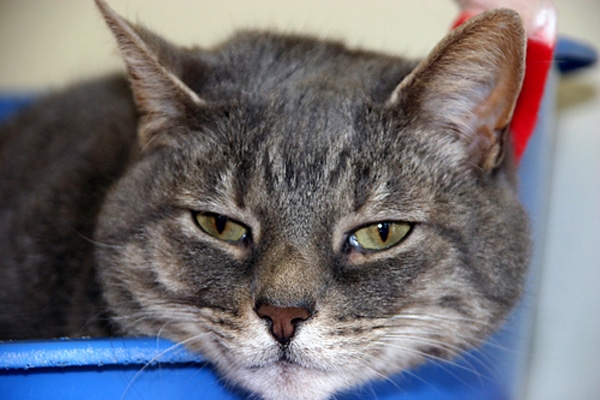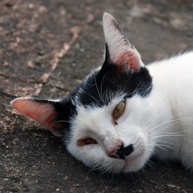Question: I have a 20-year-old calico. How long can a cat go without eating or drinking? No bowel movement for five days. Will see vet only if in pain. No howling, just lethargic.
She is going to pass away — but how many days longer? No water, just dips her nose in it and gets startled. Help!
People with terminally sick cats often ask me whether their pet is in pain. In many cases, like this one, it is not possible to determine whether the cat is in pain. But it also isn’t relevant. The question to ask is not whether the cat is in pain, but whether the cat is suffering.
Pain, of course, always causes suffering. But you need not be in pain to suffer. Severe nausea is not painful, but it is absolutely miserable. Emotional distress is not painful, but it is unpleasant nonetheless. Constipation and dehydration can torment without necessarily causing pain.
The person who asked the question probably is correct that her cat is going to pass away. There are many possible causes, but the cat’s age and symptoms are most consistent with end-stage kidney failure.
In its early stages, kidney failure causes increased thirst combined with weight loss. However, as the disease progresses, it can lead to a crisis in which the affected cat becomes profoundly lethargic because she feels too sick to move. The cat may lose interest in food and water because she feels nauseated (lolling of the head above the water bowl is a classic sign of kidney failure — it seems that cats with the syndrome feel simultaneously nauseated and thirsty). Their bowels do not move because they consume no food, and dehydration causes existing feces to become impassably hard.

If nothing is done, cats with end-stage kidney failure may develop exquisitely painful ulcers in the mouth and throughout their intestines. They may begin to suffer from seizures as toxins build up in the bloodstream and then act on the nervous system. It is common for cats to suffer through several days of these progressive symptoms before they expire naturally.
Think about it: Your cat feels too sick to move, she is simultaneously thirsty and nauseated, she may be constipated, and she may have agonizing ulcers. There is room for debate about whether she is in pain (although I believe she probably is), but it is very clear that, pain or no, she is suffering.
I am very confident that the cat in question is suffering, even if she does not have end-stage kidney failure. Other syndromes are possible, but any condition that causes the symptoms described also causes suffering.
Leaving a cat to suffer through a situation like this without any help is inhumane. This cat needs to see a vet for euthanasia, treatment, or hospice.








